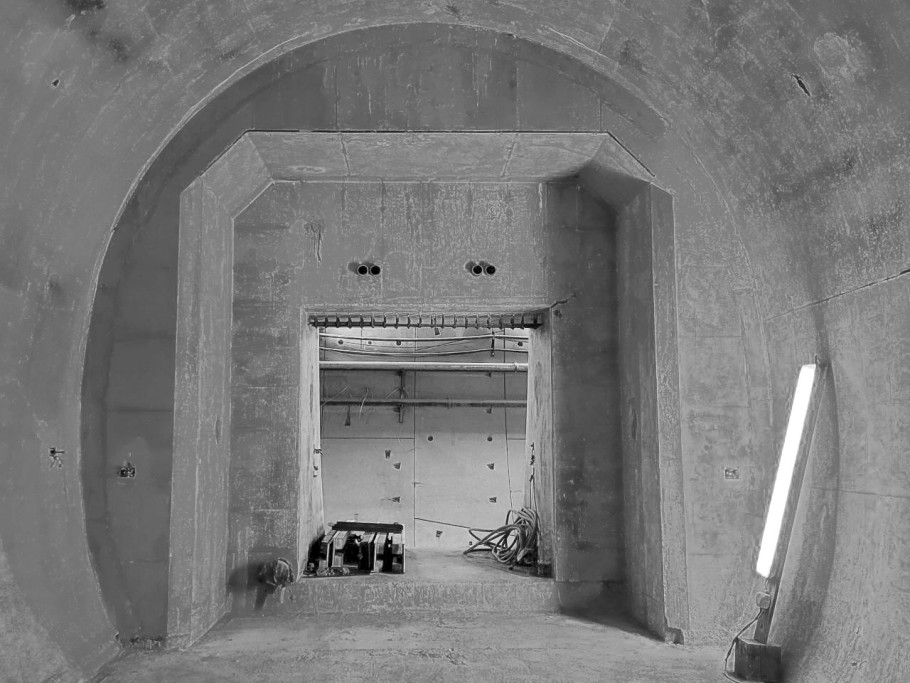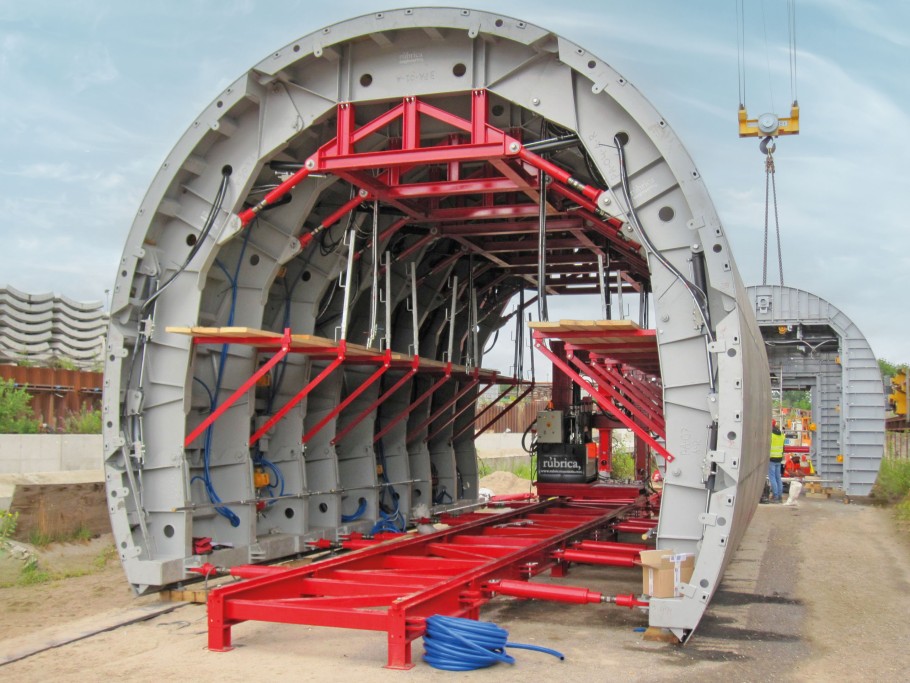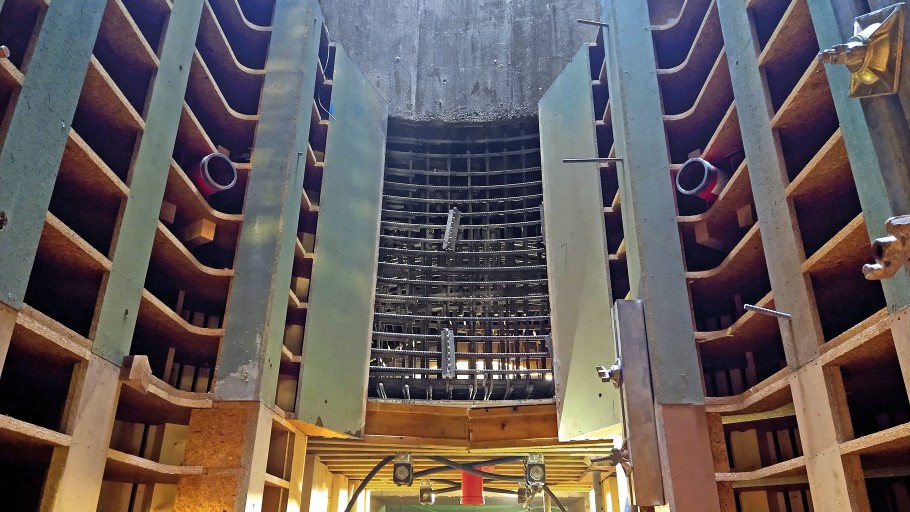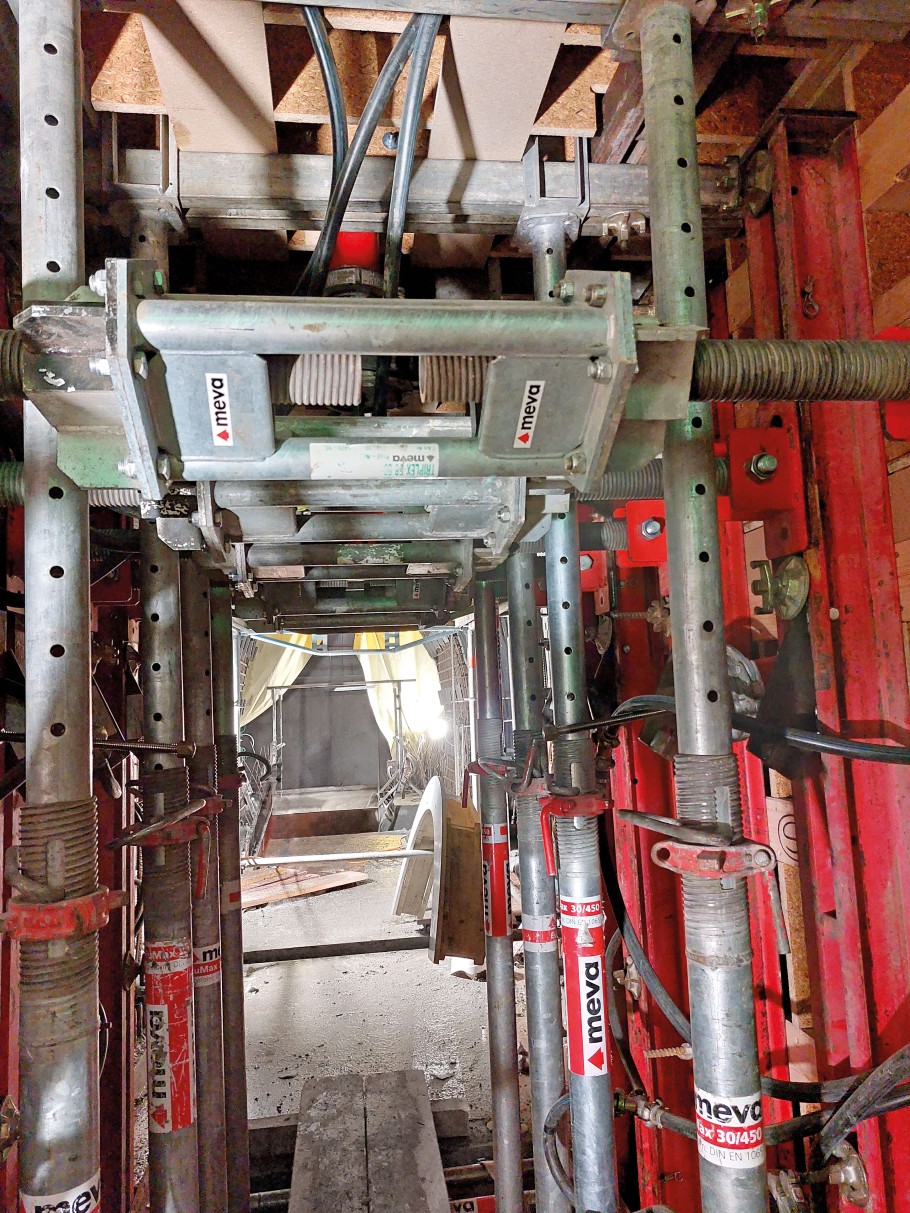Select your region:
Precision work below ground
Contractors: ARGE Tunnel Rastatt, Stuttgart; Construction companies Ed. Züblin AG and HOCHTIEF Solutions AG
The Rastatt railway tunnel will form an important element of the European rail freight corridor between Rotterdam on the North Sea and Genoa on the Mediterranean. Two 4,270 m long railway tunnels are connected by eight emergency cross-passages and a service cross-passage. These nine tunnels were constructed using special solutions from MEVA.
Nine tunnel cross-passages poured using clever special formwork solutions
The Rastatt railway tunnel will form an important element of the European rail freight corridor between Rotterdam on the North Sea and Genoa on the Mediterranean. Two 4,270 m long railway tunnels are connected by eight emergency cross-passages and a service cross-passage. These nine tunnels were constructed using special solutions from MEVA.
The approximately 16 m long cross-passages, located at 500 m intervals, are fundamental for the safety concept. In an emergency people will be able to escape to the other main tunnel. In addition, the cross-passages are equipped with smoke-proof, sealing safety chambers. For their construction, a fold-out formwork carriage was designed. In the supply shaft, by contrast, custom-made wooden boxes were used.
Emergency cross-passages
The eight passageways are not round or rectangular throughout, but rather consist of several stages. A rectangular connection block leads from the first main railway tunnel into the cross-passage. Beyond this, the passageway widens into an intermediate block – also rectangular but designed with a vaulted ceiling – which then connects up to the 9.85-10 m long oval vault.
The complex geometry – round and rectangular, tapered from the inside to the outside – required a special solution in order to be able to transport the formwork into and out of the cross-passage. Working together with its partner for steel formwork, Rúbrica Ingeniería, MEVA developed a flexible formwork carriage that enabled all stages of the construction work to be performed with as few modifications as possible. The construction consists of a rail-mounted transport carriage, hydraulics with a control unit, formwork and working platforms.
Before each tunnel was built, the earth was stabilised by freezing it. Several tubbing rings, i.e. prefabricated concrete elements on the interior walls of the main tunnels, were broken out and the frozen earth removed by a milling excavator. The reinforcement was installed step by step and stabilised using shotcrete. Once the cross-passage had been excavated and sealed against groundwater, the concreting work began.

Formwork carriage
First of all, the floor – up to 1.75 m high – was poured. It was now possible to install the rails, and the transport carriage delivered the first vault formwork segment. In order to be able to move this construction – 5.75 m wide and 5.25 m high when fully extended – through the narrow entrance, the hinged circular formwork sections were folded in hydraulically to 3.65 x 3.29 m. It was now possible to move it through the opening with just millimetres to spare. The transport carriage carried the segment into the cross-passage and was then folded out hydraulically to its maximum size.
The three-dimensional mobility of the formwork carriage facilitated the exact alignment. Two additional segments were also moved into the cross-passage, connected and equipped with formwork for the end face of the vault. It was now possible to pour the roof and the side walls of the vault over their entire length up to 10 m. Once the vault had hardened, the three segments were folded in one after the other and transported out of the cross-passage.
The rectangular formwork for the intermediate and the connection block was now transported into the tunnel. Both blocks were poured monolithically at the same time. An identical intermediate/connection block was built on the other side of the cross-passage. Once it had hardened, the intermediate-block formwork (3.90 x 4.30 m) “trapped” in the completely concreted cross-passage had to be transported out through the opening that measured only 2.52 x 2.71 m. This was also enabled by a clever folding mechanism.

Wooden formwork for the supply route
The supply cross-passage differs significantly from the emergency cross-passages. It is narrower, has a different design and meets up with the middle of a shaft with a diameter of 3.60 m that leads to the surface. Here, it was necessary to work meticulously in several individual steps using special formwork solutions. After completing the floor, the entrances, the vault and then the junction to the vertical shaft were constructed. The know-how of MEVA’s special-formwork department stood out, in particular, during the planning of the complex intersections. Solutions were developed that could be used numerous times and facilitated the construction site logistics.
Following the successful completion of the nine cross-passages, the interior work with extinguishing water pipes, walkways etc. could be carried out.


MEVA systems:
- Tunnel formwork carriage
- Special formwork
Project:
Emergency/supply cross-passages, Rastatt railway tunnel, Germany
Contractors:
ARGE Tunnel Rastatt, Stuttgart; Construction companies Ed. Züblin AG and HOCHTIEF Solutions AG
Engineering and support:
MEVA Schalungs-Systeme GmbH, Haiterbach, Germany
Subscribe to the MEVA newsletter
MEVA news, worldwide projects and tips & tricks from formwork professionals, digitally and directly to your inbox.






